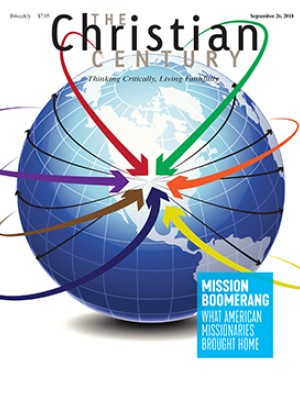The Second Amendment is racist at its root
Roxanne Dunbar-Ortiz's social history highlights who's at the other end of the barrel.
The Second Amendment consists of a single, 27-word sentence: “A well regulated Militia, being necessary to the security of a free State, the right of the people to keep and bear Arms, shall not be infringed.” Embedded within it is a grammatical ambiguity that, two and a quarter centuries later, divides liberals and conservatives on ideological grounds: How is “the right of the people to keep and bear Arms” connected to “a well regulated Militia”?
If, as liberals argue, the original meaning of the Second Amendment was to ensure that each state could form a militia, then Congress (and now, by extension, the states themselves) may regulate firearms on an individual basis as long as “the people,” collectively, can form a state militia. If, as conservatives argue, the reference to militias is merely prefatory, the original meaning of the Second Amendment grants individuals the right to keep and bear arms, thus restricting the government’s ability to ban an individual’s ownership of firearms. This debate over the Second Amendment has been litigated to the United States Supreme Court and continues to frame the debate surrounding even moderate gun control measures.
Read our latest issue or browse back issues.
Roxanne Dunbar-Ortiz, an indigenous rights activist and historian, argues that the Second Amendment indeed “enshrined an individual right”—and did so to allow settlers to “form volunteer militias to attack Indians and take their land.” In interpreting the Second Amendment’s legal effect narrowly, she argues, liberals “delude themselves” and “fail to comprehend the history embedded in U.S. culture and social relations.” To underscore her interpretation of the Second Amendment’s original purpose, she looks to how the colonies permitted—and, in some cases, required—gun ownership as essential to settlers’ survival. Virginia, for example, enacted a slew of gun ownership laws during the 17th century, including one that required men to travel with firearms when attending church.
Dunbar-Ortiz argues that the Second Amendment is far from being a “relic of the 18th century,” as former United States Supreme Court justice John Paul Stevens called it in a recent New York Times op-ed (“Repeal the Second Amendment,” March 27, 2018). In her view, the Second Amendment codified a culture of violence that continues to undergird our country’s complicated racial history and militarism. In her gripping narrative, Dunbar-Ortiz draws connections between the settlers who destroyed indigenous communities and the rise of the alt-right, as well as between slave patrols terrorizing black people and contemporary police shootings of unarmed people.
Dunbar-Ortiz’s narrative also engages personally with our collective memory. She writes of the heroes from her childhood in rural Oklahoma, such as Jesse and Frank James, the Younger Brothers, and Belle Starr, the “Bandit Queen,” all of whom earned reputations as Robin Hood–style outlaws. These heroes, she discovered, “came from middle-class families who bought, sold, and worked enslaved Africans, and who were devoted to the Confederacy.” The glorification of Confederate guerrillas as “righteous outlaws” is “deeply engrained in United States culture.” She observes that Woody Guthrie, whose guitar famously bore the label “This Machine Kills Fascists,” recorded a folk song praising Jesse James and mourning his death. As recently as 2007, Brad Pitt portrayed James as “a lone hero” in The Assassination of Jesse James by the Coward Robert Ford. We are who, and how, we remember.
Though Dunbar-Ortiz persuasively deconstructs the origins of American gun culture, her narrative fails to point a way forward. She spends a lot of time recounting some recent historiographical controversies in the field of colonial American history. I wish that she had instead narrated a vision for reform which she so clearly seeks. She alludes to this necessity in an offhand observation decrying the “taming” of Martin Luther King Jr.’s “radicalism” and in the book’s epigraph, a quote from one of King’s anti-Vietnam War sermons in which he decried his own government as “the greatest purveyor of violence in the world today.” Despite examining the pervasive influence of origin stories, she fails to suggest how we might replace the existing origin stories with a new narrative of resistance, reform, and reconciliation.
Dunbar-Ortiz concludes her book with a quote from the rapper KRS-One: “You’ll never have justice on stolen land.” While this fatalism is understandable given the narrative that she outlines, she misses an opportunity to craft a counternarrative that creates “hope in the dark” (to borrow from the title of one of Rebecca Solnit’s recent works). Nevertheless, even if Dunbar-Ortiz does not create a path forward in these dark times, her work in helping us understand the white supremacist origins of the Second Amendment may be the crack we need to let light shine in.







